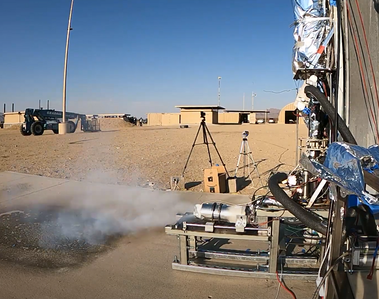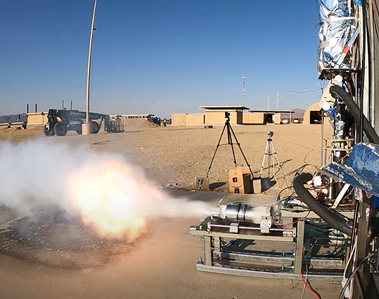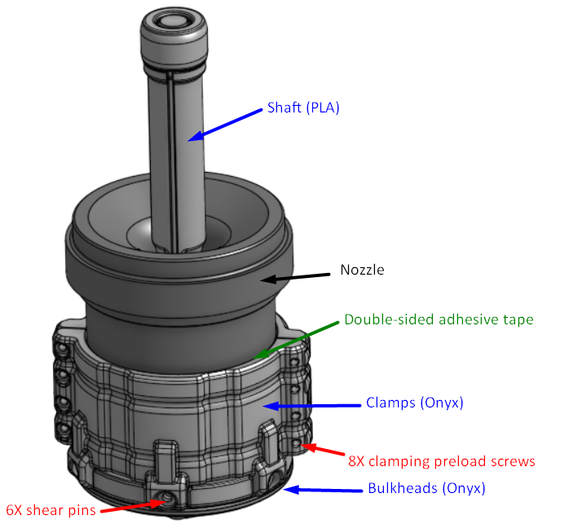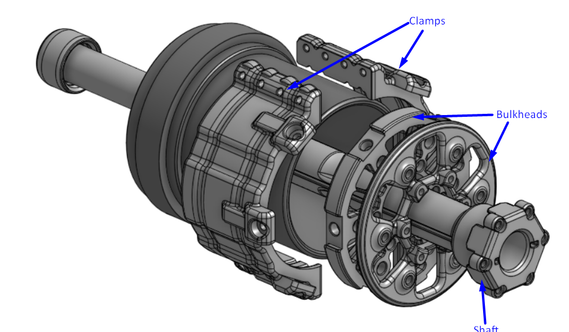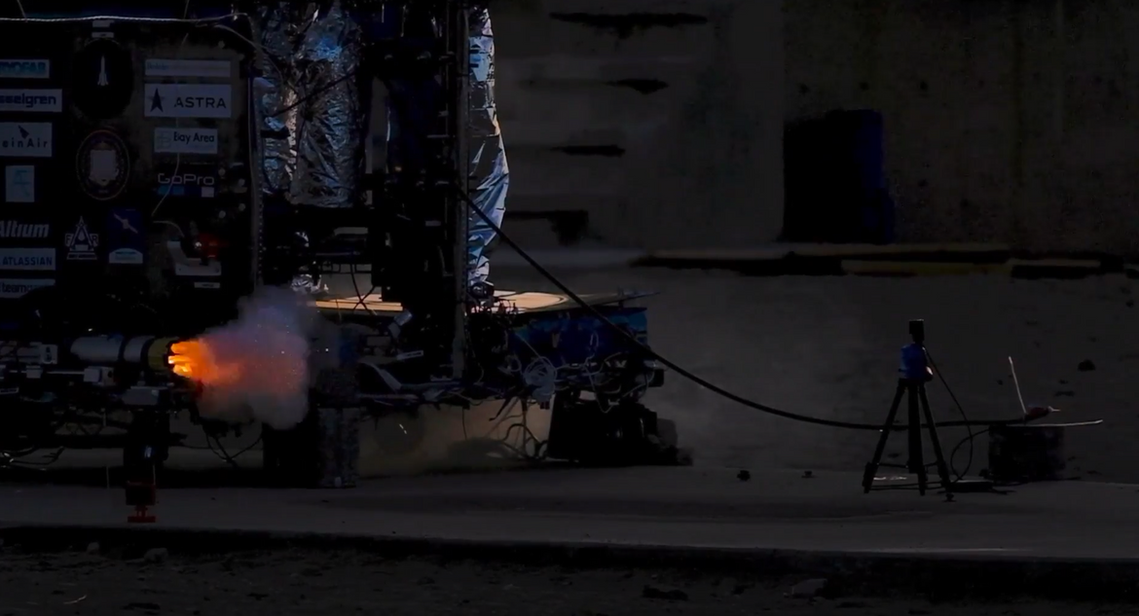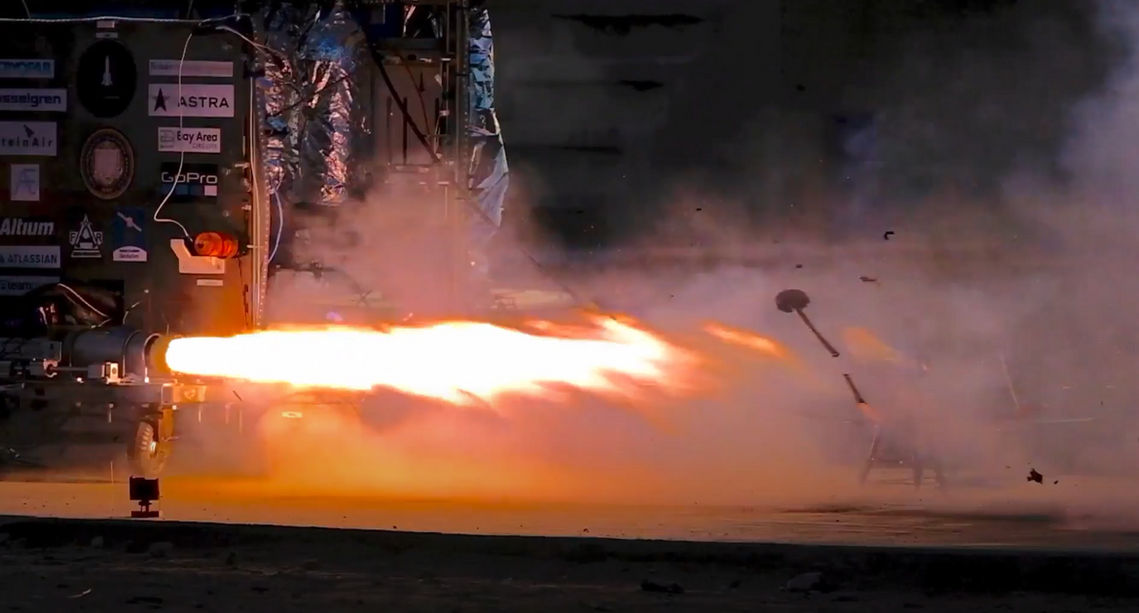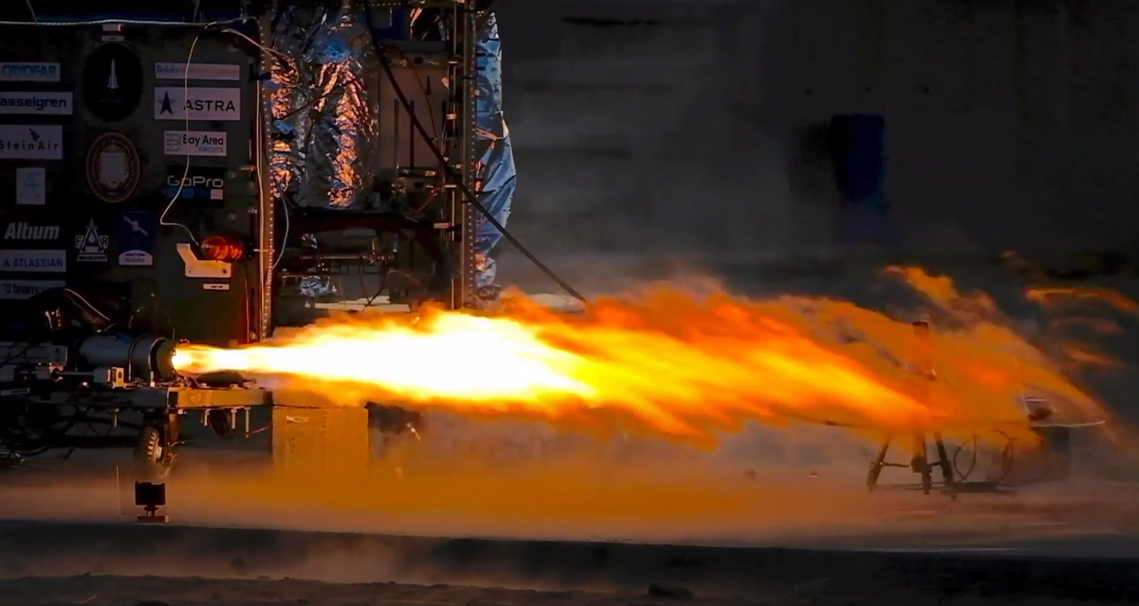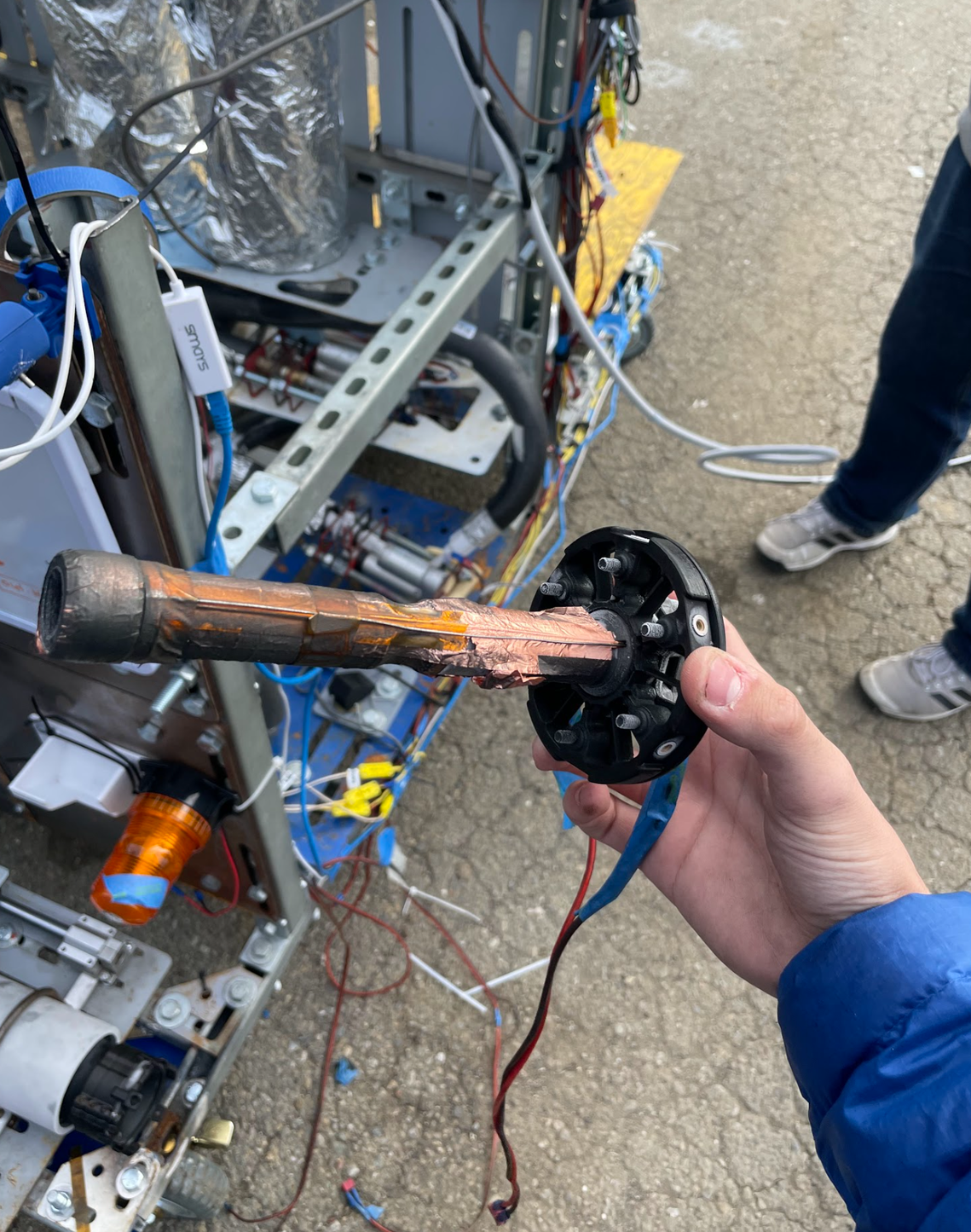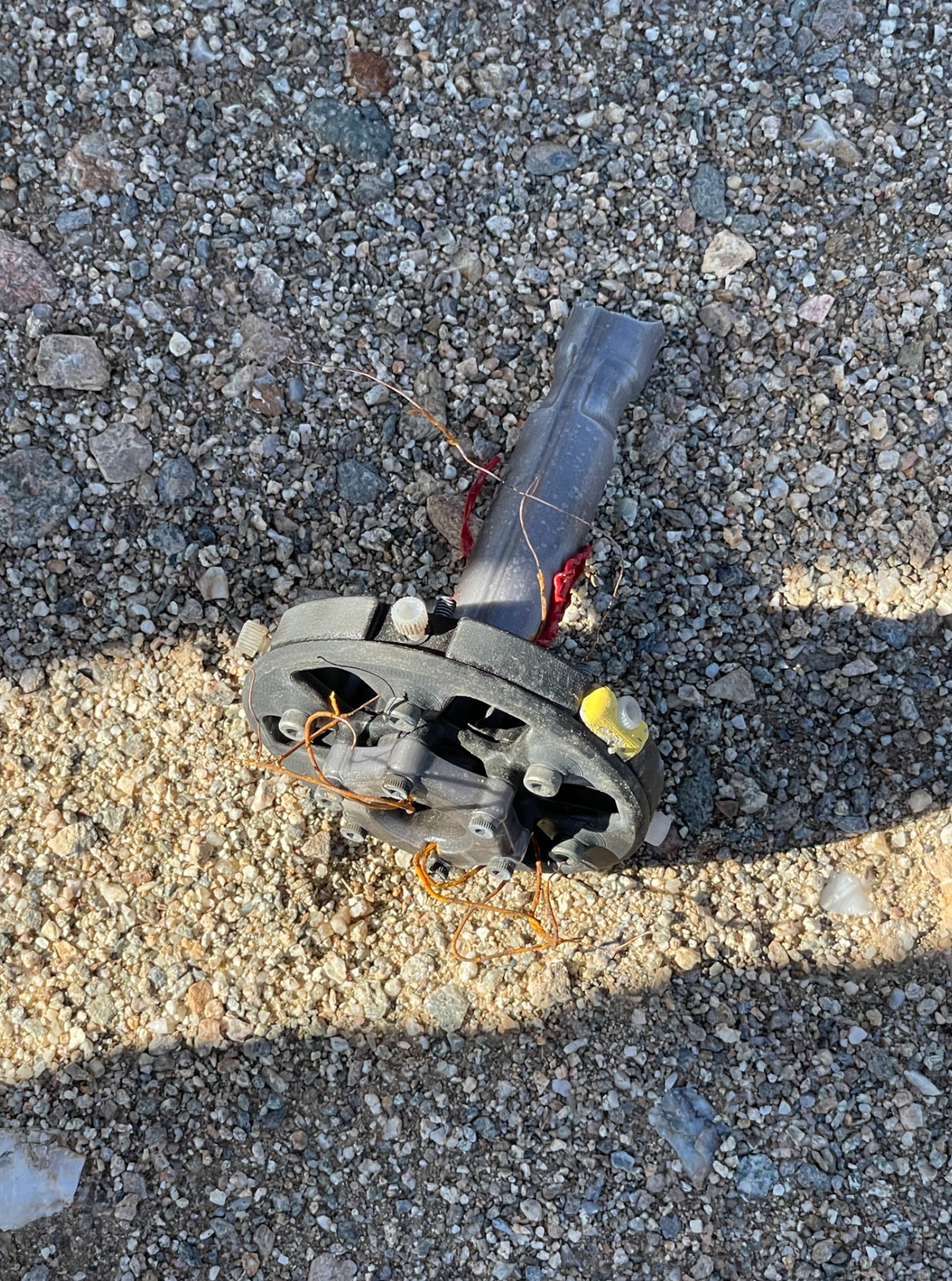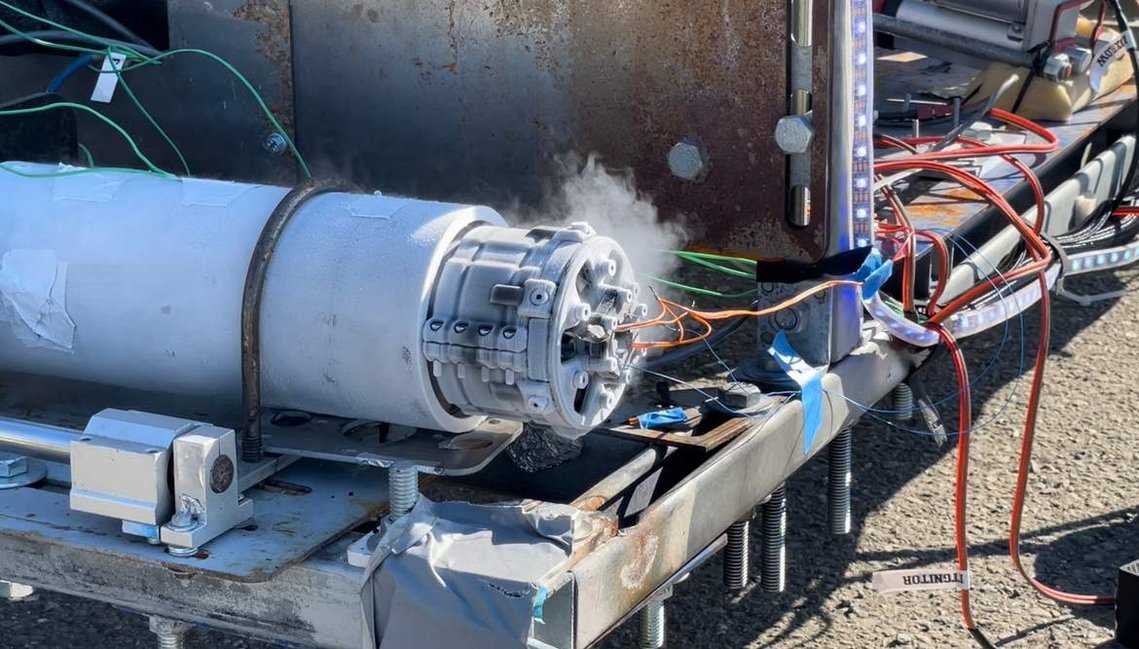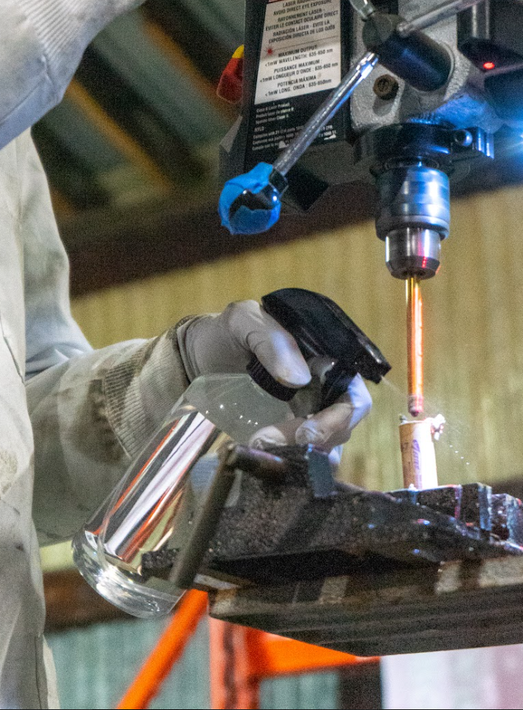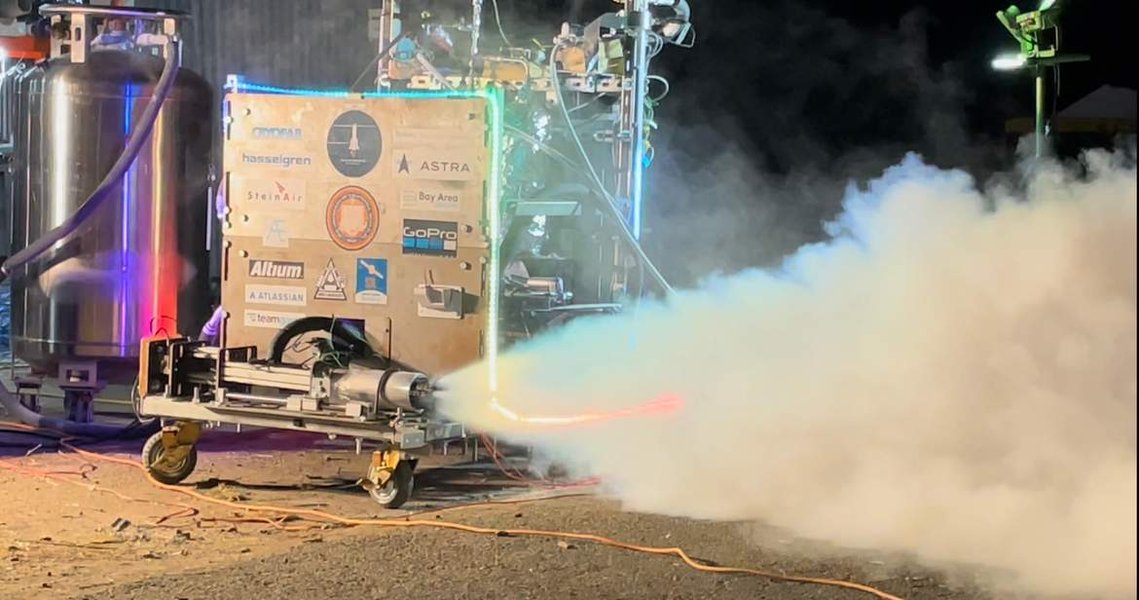Ignitor Fixture Project 2021-2022
Problem
Liquid bi-propellant rockets, as the name suggests, involve the combustion of two propellants. Ignition of these propellants may seem trivial given their volatility, but this is far from the case- the pressures and flow velocities present in the chamber at startup are considerable. The igniter fixture must- through some means- impart a baseline heat flux into the flow of mixed propellants in order to begin the combustion reaction. The problem has been likened to that of 'trying to light a match in a hurricane'. If this doesn't happen quickly enough, the combustion chamber quickly becomes a pipe bomb: delayed ignition can result in the flamefront travelling backwards into the chamber, sequentially igniting a lot of built up high energy propellant in a confined space. To explain this better, I'll go over what a ignitor system failure looks like. This all happens in a fraction of a second.
Solution
From the first iteration, my design hinged around the same concept: a set of clamps is affixed to the nozzle, and a bulkhead attaches to these clamps via shearpins. The bulkhead on the clamps restricts flow within the chamber to build pressure which shoots off the fixture as soon as ignition occurs.
Assembly

